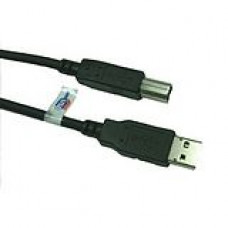Your shopping cart is empty!
Manufacturers
- Accortec, Inc.
- Addon Tech
- Advantech Co., Ltd
- Axiom
- BLACKBOX
- C2g
- Chief Manufacturing
- Cisco
- Dell
- EATON
- EMC
- Enet Components, Inc.
- Fortinet
- Getac, Inc
- HP
- HPE
- IBM
- Intel
- Legrand Group
- Lenovo
- Lexmark
- Middle Atlantic Products, Inc
- Monoprice, Inc
- National Products, Inc
- Panduit Corp
- StarTech.com
- Supermicro
- TDK
- Tripp Lite
- Veritas Technologies Llc
Google Translate
Cp Technologies ClearLinks CP-USB2-AB-6FT USB 2.0 6FT Hi Speed A to B Male/Male Cable - Type A Male USB - Type B Male USB - 6ft CP-USB2-AB-6FT
Brand: CP TECHNOLOGIES
Part Number: CP-USB2-AB-6FT
MSRP: $66.99
Availability: 10 or more
Condition: New
Part Number: CP-USB2-AB-6FT
MSRP: $66.99
Availability: 10 or more
Condition: New
Price: $55.00
Qty:
- OR -
Add to Wish List
Add to Compare
Add to Compare
ClearLinks CP-USB2-AB-6FT USB 2.0 6FT Hi Speed A to B Male/Male Cable - Type A Male USB - Type B Male USB - 6ft
Like the original USB spec, USB 2.0 lets you easily connect PCs and notebooks to peripherals, but this iteration transfers data at 480 Mbps, about 40 times as fast as its predecessor.USB 1.1 slowly became the interface of choice for peripherals like mice and joysticks, which transmit small amounts of data. But demanding devices such as digital cameras, hard drives, and dvd drives have been the domain of USB 2.0''s competitor, IEEE 1394 (FireWire), which offers 400-Mbps throughput. USB 2.0 is an alternative compatible with the original USB standard.
Write a review
Your Name:Your Review: Note: HTML is not translated!
Rating: Bad Good
Enter the code in the box below:
Partschase.com © 2024


